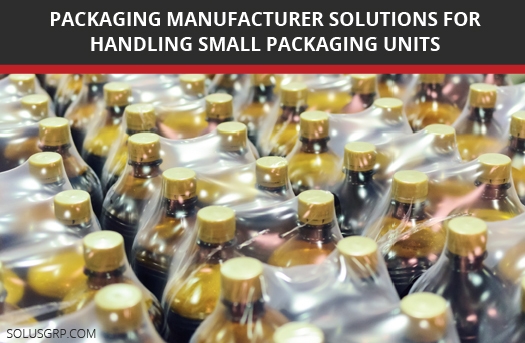We use cookies to make your experience better. To comply with the new e-Privacy directive, we need to ask for your consent to set the cookies. Learn more.
Packaging Manufacturer Solutions for Handling Small Packaging Units
It is one thing for packaging manufacturers to bundle and ship a unit load of, say, collapsed cardboard boxes. It's quite another to handle blister packs, plastic bags, and bottles that don't fit neatly into boxes in the first place.
From an industrial engineering perspective, small packaging units fall between two major material categories: unit loads and bulk materials. This is a challenge for packaging manufacturers because most material handling equipment is designed for one or the other class of item. Improving efficiency in outbound order shipping for these products requires unique material handling solutions. Manufacturers must assemble small packaging products into unit loads — that is, they must find a way to package the packaging. 
Here are a few tips to accomplish this task safely and methodically:
Choose between pallet bins and cartons. Ideally, packaging manufacturers should be able to ship products in as few container styles as possible. This allows the facility to use the same material handling equipment for vastly different products.
While forklifts and pallets provide the traditional industry standard for unit loads, the popularity of clamp trucks and cartons has been growing. Clamp trucks lift units by gripping them horizontally, eliminating pallets entirely. While this saves space in the trailer cube, it also requires cartons that can withstand significant lateral pressure. Clamp handling could damage ECT-grade corrugated cartons.
Whichever material-handling approach wins out at a given facility, improve productivity by sticking with one or the other.
Use industrial wheelie bins for short-distance product flow. Small packaging products share some properties with traditional bulk materials, such as sand or grains. The most efficient way to get them from point A to point B is to pour them into wheeled industrial bins. Staff can then wheel large quantities of products from the manufacturing line through the order-fulfillment process, and ultimately into shipping cartons.
Provide staff with bin lifters or cart dumpers to build/empty unit loads. Manual lifting and emptying of bins is a serious ergonomics risk and can slow down material flow. The solution is to provide Bin Dumpers that lift and empty industrial containers with minimal risk to the operator.
Packaging manufacturers can use a standardized fleet of bins and several Bin Dumpers at strategic points within the facility to quickly and safely move product loads from production to outbound shipping.
Material handling systems frequently work most productively when loads are standardized — this is the idea behind the unit-load principle. Using the same pallet bins or Gaylords for all products creates this standardization, but how can packaging manufacturers efficiently fill shipping units for products as different as plastic clamshells and molded tubes?
The answer, for small items at least, is to use the techniques of bulk material handling to efficiently fill standard shipping boxes. With Bin Dumpers and bins, staff can effortlessly fill containers with small packaging products for shipment — and enjoy the ergonomic and productivity benefits of material-handling machines that fill the niche between bulk and unit-load approaches.
References:
Kaszubowski, Rob. "Is your packaging prepared for clamp handling?" PackagingDigest. UBM Canon, 15 May 2018. Web. 28 June 2018.
Kay, Michael. "Material Handling Equipment." NCSU. North Carolina State University, 12 Jan. 2012. PDF. 28 June 2018.
"Manual Material Handling: An Ergonomic Approach." TDI. Texas Department of Insurance, n.d. PDF. 28 June 2018.
